In the year 68 AD, Nero committed suicide, ending not only his reign as Emperor of Rome but the reign of the Julio-Claudian Dynasty. Unsurprisingly, this plunged Rome into chaos as multiple factions tried to fill the power vacuum created by the fall of Nero. Following that came a crisis known as the Year of the Four Emperors which, as you might guess, saw four different men seize the throne in the span of less than a year. Once the dust had settled and the turmoil ended, Rome had a new emperor, Vespasian, who started his own Flavian Dynasty.
Vespasian was instrumental in bringing some much-needed stability back to the Roman Empire. His reign was mostly peaceful and focused mainly on restoring Rome’s infrastructure and economy. He also undertook ambitious building projects as parts of the city were still in shambles following the Great Fire of 64 AD during Nero’s time. Some of his more notable building projects included the Temple of Peace and, of course, the Flavian Amphitheatre which became the most iconic landmark of the Roman Empire, better known today as the Colosseum.
Early Life & Family
In The Lives of the Caesars, ancient historian Suetonius provided us with information regarding Vespasian’s early years. According to him, the future emperor was born Titus Flavius Vespasianus on November 17, 9 AD, in the Sabina region of Italy in a village called Falacrinae whose exact whereabouts are unknown today.
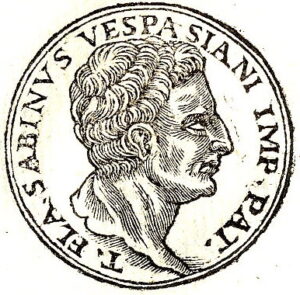
By all accounts, Vespasian came from humble beginnings. Suetonius describes the Flavian House as obscure and “without family portraits”, yet one that the country has no reason to be ashamed of. The first Flavian of note was Vespasian’s paternal grandfather, Titus Flavius Petro, who fought as a centurion for Pompey at the Battle of Pharsalus against Julius Caesar. After his side lost the war, Petro obtained a full pardon and became a tax collector. His son, Sabinus, followed in his father’s footsteps and became something one would not think possible – a beloved tax collector. Suetonius says that there were cities in Asia which erected statues in his honor with the inscription “To an honest tax-gatherer.”
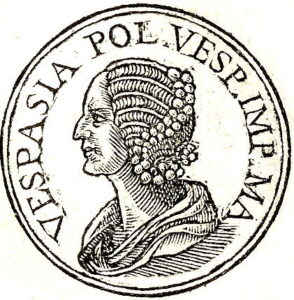
Sabinus married Vespasia Polla and had two children together: Sabinus the Younger and Vespasian. Vespasia actually came from a more prominent family as her father was a military tribune and her brother was a senator. Therefore, her sons had an easier time rising up through the ranks. For a long time, it seemed that older brother Sabinus would be the one destined for great things. He was ambitious from an early age and eventually became the prefect of Rome. Vespasian, on the other hand, did not show much interest in politics and only joined due to his mother’s constant taunts that, otherwise, he would become his brother’s footman.
In subsequent years, Vespasian married Flavia Domitilla who bore him two sons and a daughter: Titus, Domitian, and Domitilla the Younger. While both his sons would eventually reign as Roman emperors, Vespasian’s wife and daughter passed away before he ascended to the throne.
Vespasian Enters Politics
In order to become a praetor, Vespasian first had to serve in the military and as a minor magistrate. He started off as a tribune of the soldiers assigned to Thrace. During the reign of Claudius, Vespasian was appointed legate thanks to the influence of Narcissus (this not the mythological hunter who fell in love with his own reflection, rather a freedman who was part of the imperial court). Vespasian was given command of his own legion, Legio secunda Augusta, and stationed in Germany. This promotion was a double-edged sword. While Vespasian climbed up the social ranks, he also became an enemy of Agrippina, Claudius’s wife, who hated Narcissus and all of his friends.
Vespasian was first made consul, then governor of Africa Proconsularis, a Roman province on the northern coast of Africa. The quality of his governorship is up for some debate. Although he did not go into details, Tacitus described it as “notorious and hated” in his Histories and compared it unfavorably to that of his predecessor, Vitellius, who was “honest and popular.” Suetonius, however, said that Vespasian governed “with great justice and high honor”, although even he specified that the governor once had to deal with a riot in Hadrumetum where the people pelted him with turnips.
There was one odd thing about Vespasian’s governorship – it almost bankrupted him. Normally, governors used their position to make as much money as possible through extortion or receiving bribes. It was almost expected of them as the governorship served as a reward typically given either to friends of the emperor or ex-consuls who fought well in military campaigns. Vespasian, however, chose to secure friendships and favors over money and, at one point, found himself almost broke. Suetonius wrote that he was forced to mortgage all of his estates to his brother and then took up the mule trade to win back some of his fortune, thus earning the nickname “the Muleteer.”
Vespasian’s career as a civil servant ended somewhat ignominiously. After Claudius came Nero and, although Vespasian was originally part of his retinue, he quickly lost the emperor’s favor. He greatly offended Nero by repeatedly falling asleep or walking out during his musical performances. Vespasian was eventually kicked out of the emperor’s inner circle and began avoiding all public appearances altogether, fearing that Nero’s wrath might go further than simply banishing him from his imperial court.
Vespasian’s Military Career
As a military man, Vespasian distinguished himself in two major campaigns. First, he took part in the Roman invasion of Britain in 43 AD under General Aulus Plautius. At this time, Vespasian was still a legate in command of the Legio secunda Augusta. His brother Sabinus was also part of the invading force, although his exact rank is somewhat uncertain.
During this campaign, Suetonius said that Vespasian engaged in thirty battles and subdued two powerful tribes, most likely the Durotriges and the Dumnonii. He captured over twenty towns and also conquered the island of Vectis, known today as the Isle of Wight. For his successes, he was awarded a Roman triumph back home in Rome and, eventually, his consulship.
Vespasian played an even more instrumental role in his second military campaign when he was tasked with putting down the Great Revolt in the Roman province of Judea in what would become the First Jewish-Roman War.
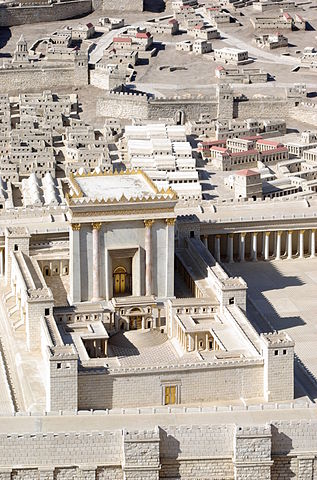
It started in 66 AD. The people of Judea were angry over taxes, exacerbated by increasing tensions between the Roman and Jewish populations. In an ill-advised attempt to exert his dominance, the Roman governor, Gessius Florus, decided to plunder the Second Temple on the Temple Mount in Jerusalem, as well as order raids on Jews throughout the city. This had the opposite effect and proved to be the spark that triggered a large-scale rebellion. The legate of the nearby province of Syria, Cestius Gallus, assembled his army and marched on Judea to quell the rebellion. He, however, suffered a shocking defeat and died in 67 AD.
Nero gave the mission of ending the Great Revolt to Vespasian. This was two decades after his incursions into Britain. By this point, his eldest son, Titus, had also joined the ranks of the military and bolstered his father’s forces with reinforcements from Alexandria, serving as his second-in-command.
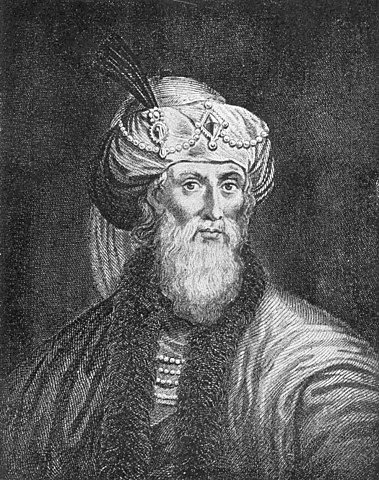
Not sharing his predecessor’s hubris, Vespasian did not want to simply rush in expecting victory. He avoided a direct attack on Jerusalem since the city was reinforced and contained the main rebel army. Instead, he first invaded Galilee. With a strong army of over 60,000 soldiers and auxiliaries, Vespasian had little trouble conquering the region as many towns gave up without a fight. Of particular note here is the Siege of Yodfat or Jotapata that took place in the summer of 67 AD. The Romans took the city after 47 days. The leader of the Jewish forces was Yosef Ben Matityahu who became better known as Josephus, one of the most important Jewish historians of the era. Vespasian kept Josephus in his retinue as a slave/interpreter, eventually granting him his freedom and Roman citizenship when he became emperor.
Josephus wrote The War of the Jews, a chronicle of the revolt that gave detailed accounts of several battles. According to him, Vespasian initially wanted to send him to Nero after the siege, but Josephus persuaded the general to keep him for himself by convincing the Roman that divine prophecy ordained that Vespasian will become Emperor of Rome. Suetonius also made reference to this prognostication and also mentioned multiple other omens which, allegedly, shown that Vespasian would one day rule Rome.
Speaking of which, that exact opportunity presented itself in 69 AD. The Jewish War was not over yet, but Vespasian had to seize the moment. He left his son in charge of the troops in Judea. Titus favored a more direct approach and decided to lay siege on the city of Jerusalem.
Titus was aided by the same people he was trying to defeat. There was in-fighting between the leaders of the rebel forces known as the Zealots. Two of them, John of Gischala and Simon bar Giora, vied for control and splintered their faction from within. It took over four months, but Titus managed to break down the walls of Jerusalem and storm the city, almost burning it completely to the ground.
Year of the Four Emperors
In order to get a good picture of Vespasian’s ascension to the throne and the impact it had on Roman history, we must understand the turbulent times that came before it that threatened to bring down the empire itself. In the year 65 AD, the Pisonian conspiracy attempted to get rid of Nero and restore the Roman Republic. It failed and resulted in dozens of executions, suicides, and exiles as Nero grew increasingly paranoid about the people around him.
A couple of years later, Governor Gaius Julius Vindex from Gaul rebelled against Nero and marched with an army to depose the emperor and replace him with another governor named . He also failed, but support for Nero was at an all-time low from the army and the noblemen, although he remained popular with the people. In 68, the Praetorian Guard was persuaded by prefect Nymphidius Sabinus to abandon Nero and switch its allegiance to Galba. Nero was tried in absentia and condemned to death as a public enemy. When word reached the emperor, he decided it would be better if he died by his own hands so Nero committed suicide, thus ending the first imperial dynasty of Rome.
The turmoil erupted immediately as Nymphidius had a change of heart and, instead of supporting Galba, he wanted the throne for himself. As it turned out, he wasn’t nearly as popular as he thought he was. The soldiers were reluctant to betray Galba and, after an inspiring speech by military tribune Antonius Honoratus, they unequivocally rejected Nymphidius’s plan and cut him down with their swords and then dragged his body through the city streets.
Galba didn’t stay in everyone’s good graces for long. He became emperor in June 68 AD. In January of the following year, he had already lost the support of the soldiers and the noblemen. This was mostly because he didn’t reward those loyal to him and failed to keep promises made by him or Nymphidius on his behalf. Moreover, Galba also cancelled all reforms of Nero and adopted a young nobleman named Lucius Calpurnius Piso Licinianus as his successor, offending other, more prominent statesmen who felt like they deserved the honor.
Among these statesmen was Marcus Salvius Otho. He had the influence to sway the Senate to his side and the money to bribe the Praetorian Guard. On January 15, the Guard assassinated Galba, Piso, and a few close associates, placed their heads on spears and brought them to Otho who became the new emperor. According to Plutarch, although only a few praetorians were involved in the killings, hundreds others piled the bodies on the ground and smeared their hands and swords with their blood as a show of loyalty to Otho.
Otho’s reign lasted a whopping three months. At the same time that he made a claim to the throne, so did another man named Vitellius. However, the latter was in Germany at the time, so it took him longer to gather his forces and march on Rome.
Vitellius had been put in charge of the Roman army in the province of Germania Inferior and he quickly endeared himself to his soldiers. In fact, he was so popular that his troops refused to swear allegiance to Galba and, instead, proclaimed Vitellius emperor.
By the time his forces actually reached Italy, Galba was dead and Otho was the new ruler. The two met at the Battle of Bedriacum on April 14, 69 AD, which resulted in a decisive victory for Vitellius. After his defeat, Otho committed suicide.
Tacitus actually gives Otho quite a noble death, saying that the emperor killed himself to avoid plunging Rome into civil war. The historian writes that Otho delivered an impassioned speech, saying that his life was not worth “so many of Rome’s young men, such noble armies, to be again cut down and lost to the state.” At Otho’s funeral, Tacitus mentions that some soldiers followed their emperor’s example and committed suicide near the pyre and that the practice was repeated at other military camps.
Vespasian Becomes Emperor
Vitellius became emperor on April 16, 69 AD, and, although he reigned until the end of the year, he lost the support of his countrymen long before that. He was a decadent ruler who, according to Cassius Dio, was addicted “to luxury and licentiousness.” He gorged himself on rare, expensive foods, holding banquets multiple times a day. He regarded Nero’s sumptuous Golden House or Domus Aurea as a “wretched house” that was scantily equipped and wanted something a bit more opulent. Unsurprisingly, his careless spending soon put a great strain on Rome’s economy and led to Vitellius losing a lot of supporters.
Vespasian’s rise to the throne echoed that of Vitellius. He also won over the legions in his charge during the war in Judea and, in July 69 AD, they acclaimed him as emperor. Moreover, he also had the support of the nearby provinces of Syria and Egypt and, before long, Vespasian had an army powerful enough to march on Rome.
The soldiers were placed under the command of General Gaius Lucinius Mucianus, the Syrian governor, while Vespasian traveled to Egypt to secure the grain supply network vital to Rome. Meanwhile, even more legions from other provinces pledged their allegiance to Vespasian, mostly because they served under Otho and bore strong resentment for Vitellius. These forces, under the leadership of General Marcus Antonius Primus, did not even wait for Mucianus’s army to catch up and advanced on Italy on their own.
Suetonius suggested a different reason for their enthusiastic support of Vespasian. They originally left Moesia in order to aid Otho and, on the way, did a fair bit of plundering and pillaging. When they found out that Otho had fallen, they realized they would be punished severely unless they ended up on the winning team so they threw their backing behind Vespasian. The troops met Vitellius’s forces at the Second Battle of Bedriacum on October 24, 69 AD, and were victorious.
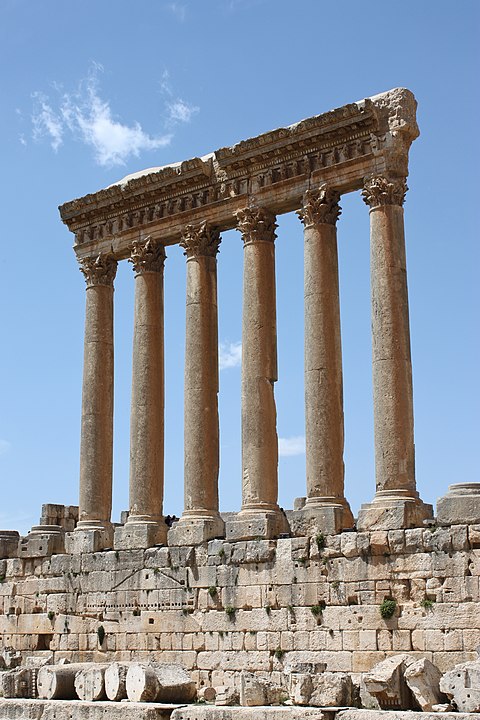
Defeated, Vitellius wanted to abdicate, but the Praetorian Guard would not allow him and, instead, made him retreat to the palace in Rome. Back in the city, praetorians and civilians put up heavy resistance against Vespasian’s forces and the battle inside Rome caused many deaths and a lot of destruction. Even the Temple of Jupiter Optimus Maximus, the oldest, most important temple in Rome was destroyed in an act described by Tacitus as the “saddest and most shameful crime that the Roman state had ever suffered.” Vespasian’s brother, Sabinus, was killed during the conflict and his youngest son, Domitian, barely escaped with his life. To show that Vitellius had lost complete control of his men, Tacitus mentioned how the mob brought Sabinus before the emperor and, even though Vitellius wanted to show mercy, the bloodthirsty horde ran through Sabinus with swords, cut off his head and dragged his mutilated corpse through the streets.
A similar fate eventually befell Vitellius, as well. Inevitably, Vespasian’s forces gained control of the city and captured the emperor. He was taken to a notorious place of execution known as the Gemonian stairs and struck down. On December 21, the Senate proclaimed Vespasian as the new emperor, although some regard July 1, the date he was declared emperor back in Egypt, as the start of his reign.
The Reign of Vespasian
Vespasian was still in Alexandria when he heard of the death of Vitellius and that he was now in charge of the Roman Empire. Therefore, Mucianus handled the administration of the empire, assisted by Domitian. The two acted with complete authority and Mucianus even had an imperial seal given to him by Vespasian so that he may stamp official documents. At one point, Vespasian sent Domitian a tongue-in-cheek message saying “I thank you, my son, for permitting me to hold office and that you have not yet dethroned me.”
After a year of strife, war, and numerous expenditures, Mucianus’s first concern was refilling Rome’s coffers. He enacted new taxes and brought back old ones, a strategy which was continued when Vespasian returned.
Undoubtedly, the most memorable money-making scheme enacted by the emperor was a urine tax. In ancient Rome, it was a commodity prized for its high ammonia content, used in laundry and tanning, and was collected at public urinals. Since urine was the basis for a successful trade, it felt natural for Vespasian to tax it. Some people found this practice incredibly distasteful, including his son Titus who protested the idea to his father. According to Suetonius, Vespasian picked up a coin and, holding it up to Titus’s nose, asked him if he found the smell offensive. He said “no” and the emperor replied “Yet it comes from urine.” This is regarded as the origin for the Latin phrase pecunia non olet or “money does not stink.” It is also the reason why, in many French-speaking parts of the world, a public urinal is also known as a “vespasienne.”
Vespasian’s reign was aided by a heavy propaganda campaign. He understood that starting a new dynasty, especially after a period of great instability, was a tough task, and that many of his people still regarded him either as unproven or unworthy. He greatly encouraged the spread of stories which mentioned prophecies and omens that he was destined to become emperor.
He made great use of writers and rewarded those who portrayed him in a positive light while punishing those who did not. The Stoic philosophers were frequent targets and were often arrested or had their works destroyed. At one point, at the insistence of Mucianus, Vespasian expelled them from Rome altogether. It should be noted that many ancient historians used as sources for Vespasian such as Tacitus, Josephus, and Suetonius were contemporaries of his. They wrote their accounts during the reigns of Vespasian or his sons and were all rewarded in one form or another.
Cassius Dio who wrote his work a hundred years after the Flavian Dynasty had disappeared, was more critical of Vespasian. Although he didn’t disparage him greatly, either, Dio was not afraid to mention some of his more reprehensible acts such as the persecution of the Stoics or the execution of the families of certain enemies. Both he and Suetonius mentioned that Vespasian had been the target of multiple conspiracies. Although they failed, they showed that the emperor was probably not as popular as he thought.
Vespasian the Builder
Vespasian’s reign was mostly peaceful with the exception of the Batavian Rebellion which occurred at the beginning of his rule. Several tribes banded together in Gaul and Germany and rose up against the Roman Empire, hoping to take advantage of the turmoil caused by Nero’s death and the Year of the Four Emperors. They were led by Gaius Julius Civilis and Julius Sabinus. The latter claimed to be a descendant of Julius Caesar and, therefore, the rightful heir to the throne. Although the rebels initially gave the Roman army multiple humiliating defeats, Rome responded with a massive force led by Quintus Petillius Cerialis who crushed the uprising in 70 AD.
Vespasian’s long-lasting legacy is that of a builder. When he ascended to the throne, many parts of Rome were ravaged due to the Great Fire, not to mention the urban battle between his soldiers and the supporters of Vitellius.
He rebuilt the Temple of Jupiter, using the same foundations but constructing a larger, more lavish structure. He undertook great efforts to restore the three thousand or so bronze tablets that had been destroyed from the temple, searching for copies throughout the empire. Other major works included two new temples, one dedicated to peace and the other to Claudius who had been deified.
In order to restore many neighborhoods, Vespasian enacted a new law which allowed anyone to take over a vacant lot previously destroyed by the fire, provided that they built on it and that the original owner refused to do so.
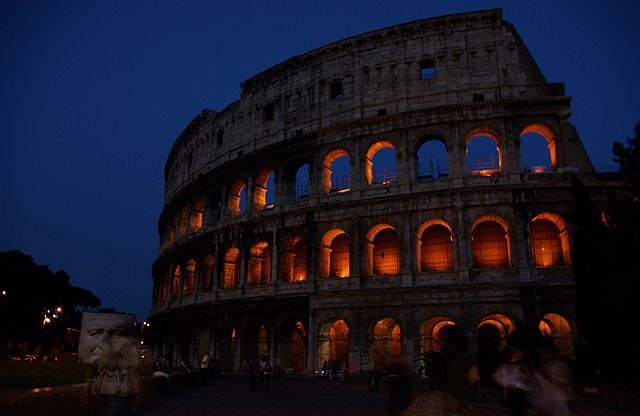
Of course, all of these projects pale in comparison to the new Flavian Amphitheater, better known as the Colosseum. Capable of seating over 50,000 spectators, it was the largest structure of its kind in the ancient world. Construction on it began in 72 AD and finished during the reign of Titus, with Domitian later ordering renovations during his time as emperor.
The End
Vespasian died on June 24, 79 AD, at the age of 69. His demise was somewhat of a mixed bag. On one hand, he was only the second emperor at that point to die of natural causes (the first being Augustus), with all the others being assassinated or committing suicide. On the other hand, he did not have a dignified death. Suetonius reported that Vespasian fell ill in Campania and “contracted a bowel complaint.” He was stricken with violent attacks of diarrhea that eventually killed him. With his last breaths, Vespasian asked his attendants to hold him up because “an emperor ought to die standing.”
He was followed on the throne by his son, Titus, and then by his other son, Domitian. The Flavian Dynasty ended with Domitian’s death in 96 AD after only 25 years, but projects like the Colosseum ensured that Vespasian’s legacy lives on for millennia.



